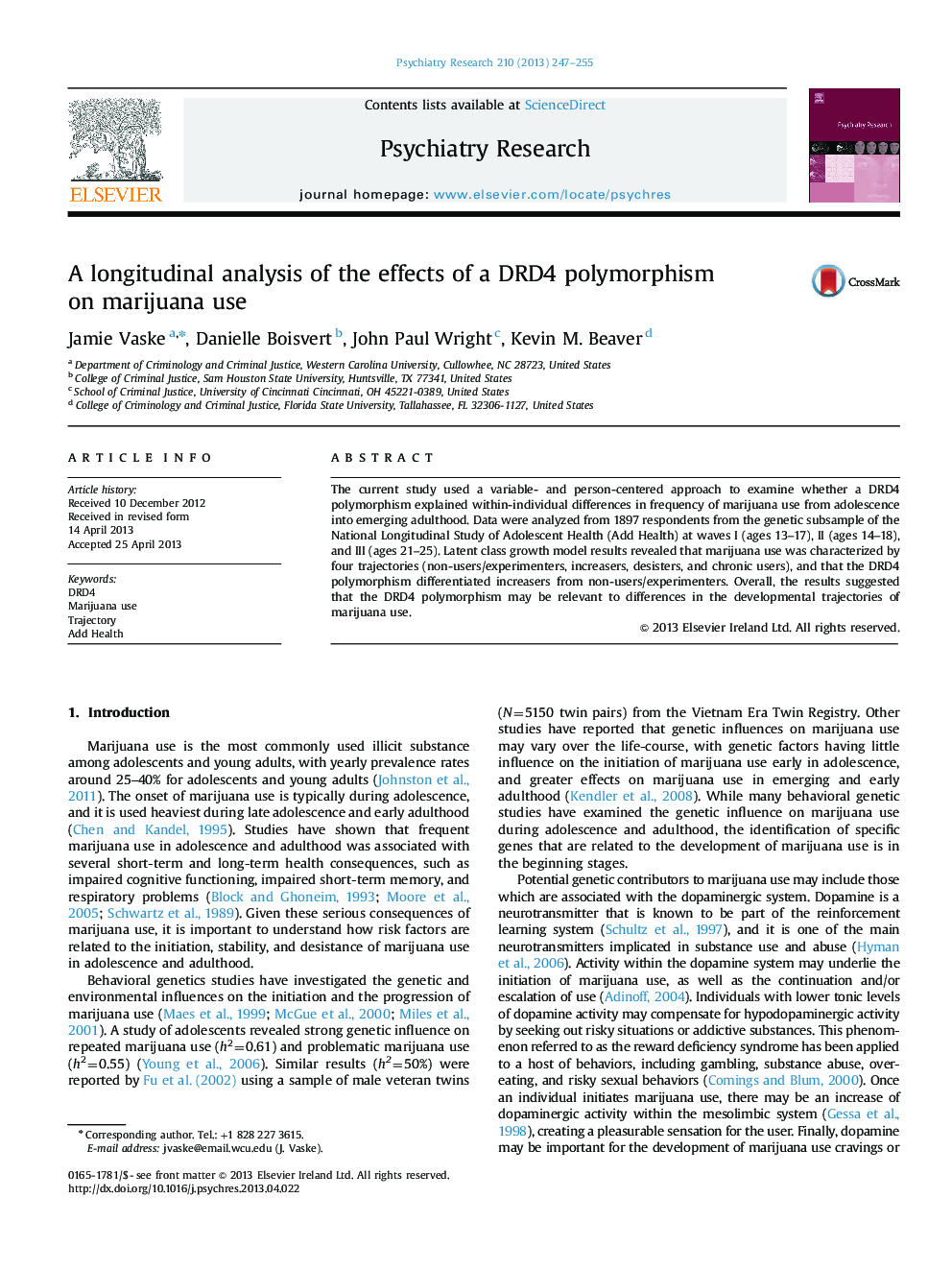| Article ID | Journal | Published Year | Pages | File Type |
|---|---|---|---|---|
| 333263 | Psychiatry Research | 2013 | 9 Pages |
The current study used a variable- and person-centered approach to examine whether a DRD4 polymorphism explained within-individual differences in frequency of marijuana use from adolescence into emerging adulthood. Data were analyzed from 1897 respondents from the genetic subsample of the National Longitudinal Study of Adolescent Health (Add Health) at waves I (ages 13–17), II (ages 14–18), and III (ages 21–25). Latent class growth model results revealed that marijuana use was characterized by four trajectories (non-users/experimenters, increasers, desisters, and chronic users), and that the DRD4 polymorphism differentiated increasers from non-users/experimenters. Overall, the results suggested that the DRD4 polymorphism may be relevant to differences in the developmental trajectories of marijuana use.
